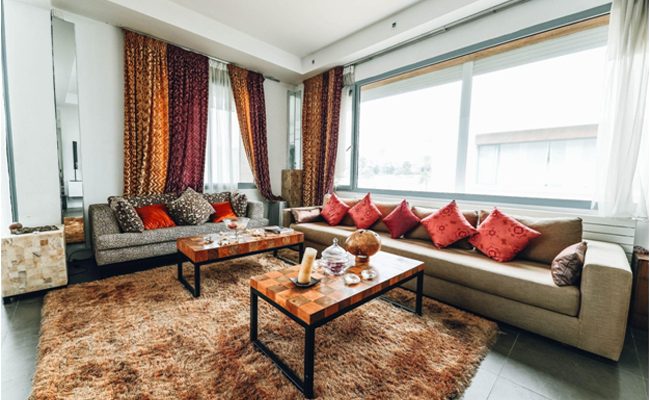
Visiting the rug store as a first-timer may be too overwhelming for you as there are numerous types of rugs laid out within your view. Then, confusion begins to build, and you might end up just buying anything you think is good enough.
It would be best to consider some characteristics of the rug to avoid purchasing one that doesn’t suit your preferences and is also not of impressive quality. However, detecting the differences between rugs of high quality and those that are not can be tricky.
Hence, we’ve written this article to help buyers like you experience great value for money when going to a rug store to get one. Below, we’ve enumerated some details you need to know about rug features to look out for to ensure they’re of high quality.
Handmade or Machine-made?
As the name indicates, handmade rugs are manually woven by rug makers themselves. The makers sit on the loom machine and weave the several colored fibers individually by hand until it creates a pattern. The duration of the creation will rely on the number of knots made, which is why handmade rugs will take almost a month or more, especially for very complex patterns.
The knot per square inch is a good indicator of handmade rugs since it will also determine a rug’s quality, durability, and design visibility. High-quality rugs contain almost 300 knots per square inch which look neat and tighter, especially for patterns with precise details.
However, rugs with lesser knots per inch may tend to feel coarse or loose when you touch them, and the pattern may not be visible. More knots would mean better attention to the design.
On the other hand, machine-made rugs are usually mass-produced since machines are automatically weaving out the patterns. This is done by programming a specific design into the machine and is left to do its work.
This is advantageous for rugmakers, especially since the rug-making process gets done quickly, and the rugs get immediately distributed to the various stores. But, they lack the longevity and tightness of knots compared to handmade rugs.
We’ve got tricks on how to check whether the rugs are either handmade or machine-knotted:
- Turn the back part of the rug. Since we know by now that handmade rugs have individual knots tied on the front part, you can inspect how the knots were weaved. There are no backing materials with such rugs, which means the entire rug design will still be visible at the back. Linen or synthetic backing is already visible with a machine-made rug.
- These are the visible vertical threads of the knot material used. The fringe is attached on each end in machine-made rugs. Meanwhile, there’s a visible extra fabric for handwoven rugs to tie the fringe under the rug for a neater look.
- Knot Uniformity. Knots will look identical in a machine-created rug, but a hand-knotted rug will have irregular-looking knots. Another feature would be the tie’s color difference since handmade rugs tend to have more colors than machine-made ones.
- Directions of the Knots. A handmade rug is created through knotting ties in a particular direction. Therefore, the ties are pushed downward to develop the knots.
Materials
Rugs of unimpressive quality will not display all fiber content and will be produced using average fibers. However, this will not take long because of low durability due to external factors that weaken the fibers as time passes.
One excellent material used for rugs is wool. Wool is produced as a combination of different types of wool from different parts of the world, such as Persia, India, Pakistan, or China, to create premium quality wool rugs. These will also guarantee longevity as the material is very durable.
Color and Process
Different kinds of dyes are used to change the color of rug fibers. It is better to inspect rugs if the dyes used are organic ones. Then, the fibers should be dyed well before the knotting process. Organic dyes are much safer since they don’t release volatile organic compounds (VOCs), common in machine-made rugs and even in chemical dyes.
Shape and Overall Look
One noticeable difference between an inferior rug and a high-quality one is its flaws. Although handmade rugs typically have irregularities, especially in the threads, it is different when the dimensions are unequal, especially for rugs with common shapes like squares and rectangles.
This implies that the rug was mass-produced and was made with average materials. Good quality rugs have edges that look fine despite their small irregularities.
Conclusion
With this, you are now equipped with the necessary knowledge of rugs and will be more confident returning to the rug store without feeling overwhelmed with your options. But, always remember that you don’t have to choose something you don’t like. If you prefer design over quality, there’s nothing wrong with that! Ultimately, it’s still your choice which rug to get.
Leave a Reply